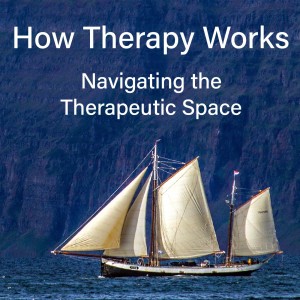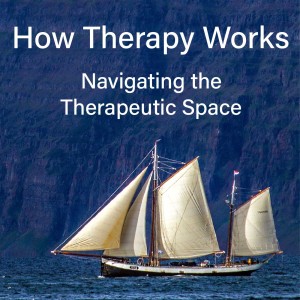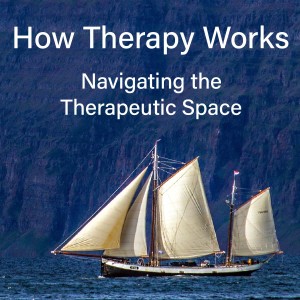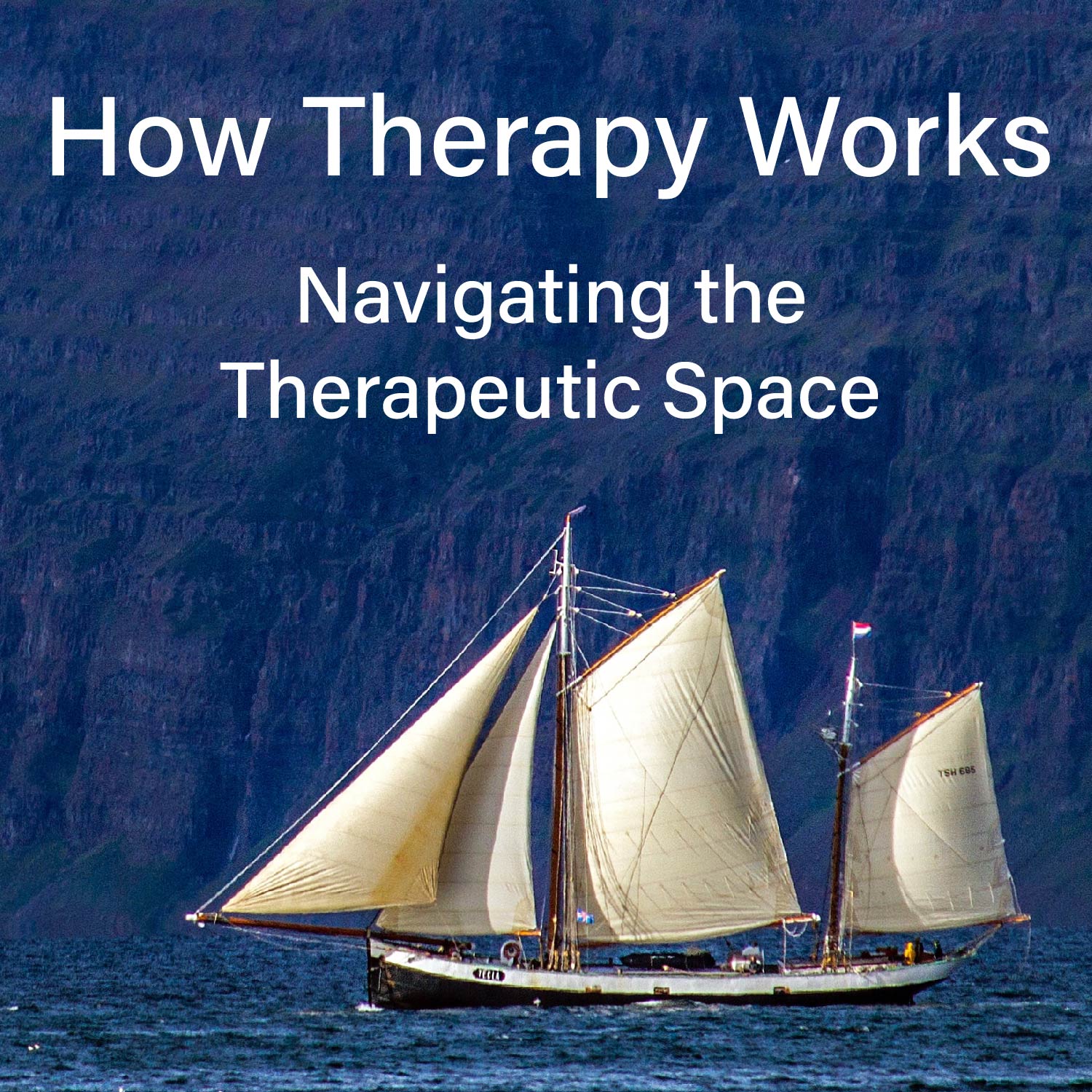Episodes

Wednesday Nov 20, 2019
#3 About Patterns of Avoidance
Wednesday Nov 20, 2019
Wednesday Nov 20, 2019
This Episode homes in the emotions that trigger maladaptive patterns.
Key Points
-
Avoidance patterns are shaped more by psychological development at the time they are “invented” than by the nature of the affect being avoided.
-
Strategies for distancing affects are products of the nonconscious problem
solver function of the mind.
-
Only recently has it become clear how memories are encoded in the brain
as neural networks defined by enhanced synaptic connections linking
groups of neurons.
-
Long-term potentiation is an important mechanism of memory formation
in which synapses are enhanced when upstream and downstream neurons
happen to fire simultaneously.
-
Procedural memory, where many EDPs are stored permanently, is learned
and recalled without effort and is held diffusely in the brain.
-
The catalog of EDPs includes broad categories of (1) potentially voluntary avoidant thought and behavior, (2) helpers that support acting on avoidant behaviors, and (3) involuntary and unpleasant symptoms that also serve to
distance from affects.

Wednesday Nov 20, 2019
#2 The Affect Avoidance Model
Wednesday Nov 20, 2019
Wednesday Nov 20, 2019
Our second episode highlights the Affect Avoidance Model, a universal and nondenominational way to look at the problems treatable with psychotherapy.
Key Points
-
The affect avoidance model views any psychological dysfunction that can be addressed through psychotherapy as the result of the mind’s automatic tendency to avoid the conscious experience of negative affects.
-
Avoidance of affects appears to be a guiding principle in the mind’s built-in strategies for adapting to life. This leads to unhealthy avoidance but also leaves opportunities for facing and detoxifying painful feelings long held out of consciousness.
-
Avoidance patterns in the form of EDPs are triggered by recognition of a circumstance associated with anticipated negative affect. The emotional approach to resolution is to prevent this system from activating avoidance strategies.
-
EDPs embody three types of avoidance strategy: dysfunctional patterns of behavior, helpers aimed at biasing free will toward implementing the dys- functional behavior, and involuntary symptoms like anxiety and depres- sion, that also serve to avoid affects. The behavioral approach to treatment seeks to change these patterns of thought and behavior.
-
Helpers include primary emotions like fear, conscience-based emotions including shame and guilt, automatic thoughts, and impulses.
-
In addition to dysfunctional behaviors designed to avoid affects directly, the mind may seek to implement childlike plans to influence the therapist in the hope of solving unfinished business from early life. In doing so, the aim is to avoid the pain of disappointment.
-
All therapies exhibit the same structure consisting of tension between the desire to change in positive ways and the nonconscious problem solver’s efforts to avoid change. This tension becomes the backdrop against which issues are revealed and affects come to the surface where they can heal.
- The affect avoidance model unifies different therapies by focusing on change processes. In doing so, methods from different therapies can be chosen pragmatically and put to work in a cyclical alternation between emotional healing and behavior change.

Wednesday Nov 20, 2019
Episode 1: Why Humans Have Problems
Wednesday Nov 20, 2019
Wednesday Nov 20, 2019
Welcome to our Podcast, How Therapy Works, a nondenominational guide to psychotherapy. In this first episode, Amelie Southwood asks questions and Jeffery Smith, MD shares a new way to think about psychotherapy. We begin by focusing on the problems clients bring to therapy using a framework common to all therapies.
Link to a 3 min. Video Introduction:
https://www.youtube.com/watch?v=kPURh0ZHZOw
Link to Dr. Smith's Website and Blog:
http://www.howtherapyworks.com/
This podcast is a companion to Dr. Smith's textbook of psychotherapy, Psychotherapy: A Practical Guide (2017), available on Amazon and through http://www.howtherapyworks.com/books
Key Points in this episode:
-
Problems treatable with psychotherapy can be seen as layered modules with each one originally "designed" to shield from appraised or anticipated harm.
-
These problems can be divided up into distinct modules called entrenched dysfunctional patterns or EDPs.
-
All EDPs are triggered by the anticipation of experiencing a painful, over- whelming, or uncomfortable emotion and consist of a pattern of thoughts, feelings, and behaviors designed to avoid the dreaded emotion.
-
Any EDP can be visualized as unit with the triggering circumstance and its associated feeling on one side and the pattern of avoidance on the other. In between is the invisible mental processing that creates and implements an avoidance strategy.
-
Multiple EDPs can be visualized as stacked in layers starting with the ear- liest at the bottom. Emotions anticipated to escape from one layer are what trigger the next.
-
For a given EDP, psychotherapy can approach by detoxifying the trigger- ing feeling or by helping the patient change thoughts and behaviors.
-
Integrated, modular therapy is usually targeted at the most accessible EDP. It can approach via the emotion or via the avoidant thoughts and behaviors and can be chosen for the precise job at hand.

Sunday Dec 08, 2019
Bonus Podcast: Start Here to be a Better Therapist
Sunday Dec 08, 2019
Sunday Dec 08, 2019
To whet your appetite for an efficient new way to improve your therapy skills, regardless of orientation, we are offering this way to guide your sessions by cycling through just four questions. Enjoy! And if you want more, the same content is available with slides on Youtube on my channel, Jeffery Smith MD.

Sunday Dec 15, 2019
#4 Focus on Dysfunctional Patterns, Part 1
Sunday Dec 15, 2019
Sunday Dec 15, 2019
In this fourth episode, we explore details that are true of all dysfunctional patterns, then we turn to a catalog of all the different types that are encountered in a psychotherapy practice. This is part 1 of two that relate to Chapter 4 in the book.

Saturday Jan 04, 2020
#5 Focus on Dysfunctional Patterns, Part 2
Saturday Jan 04, 2020
Saturday Jan 04, 2020
In this fifth episode, Part 2, we build a catalog of all the different types of dysfunctional patterns encountered in a psychotherapy practice. Having a matrix with just so many possibilities makes it easier to clarify just what kind of problem you are dealing with now. This is part 2 of two that relate to Chapter 4 in the book.

Monday Jan 20, 2020
#6 How Affects are Healed
Monday Jan 20, 2020
Monday Jan 20, 2020
In this episode, we explore recent neurophysiology about how painful affects can be "detoxified," or healed, to the point where they are no longer threatening and no longer trigger avoidance. In particular, we look at how exposure therapy works and the recently researched mechanism of reconsolidation.

Saturday Feb 08, 2020
#7 How Relationship Brings Healing
Saturday Feb 08, 2020
Saturday Feb 08, 2020
Paired to chapter 6 in Psychotherapy: A Practical Guide, we delve into just how connection leads to mindfulness and mindfulness leads to the healing of painful emotions, especially from loss, trauma, and neglect. See Dr. Smith's website www.howtherapyworks.com and tell us about your experiences.

Friday Feb 28, 2020
#8 Motivation's Role in Therapy
Friday Feb 28, 2020
Friday Feb 28, 2020
Motivation from within and without is a very important factor affecting every therapy. In this episode, a companion to Chapter 7 in Psychotherapy: A Practical Guide, we explore all the ins and outs of this critical factor.

Friday Mar 13, 2020
#9 A Clinician's Primer on Psychological Development
Friday Mar 13, 2020
Friday Mar 13, 2020
In this episode, corresponding to Chapter 8 in Psychotherapy: A Practical Guide, we give therapists a concise guide to those developmental periods and steps where problems are most likely to affect clients in their adult lives and where understanding has an important role in helping clinicians make sense of what they see.

